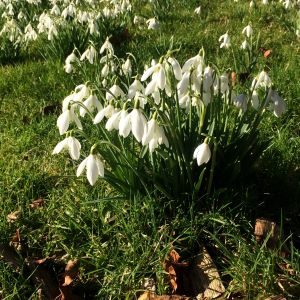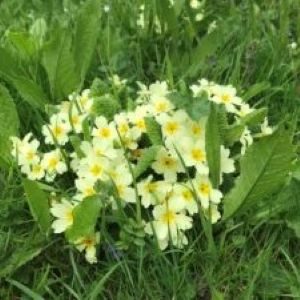A woodland area in your garden will attract a wide diversity of wildlife; and although many gardens will not have space for a large wooded area, even a few fruit trees; a specimen tree or a large shrub will be the perfect starting point for creating a woodland habitat. A shady spot in the garden under trees/shrubs can often be neglected but why not create a wonderful woodland habitat adding in layers of plants to bring the area to life.
As may be found on the edge of a woodland, herbaceous plants and bulbs are found under the tree and shrub canopy, and this wonderful mix can be readily recreated in your garden, appealing to bees, butterflies, insects and birds. A log pile provides homes for small animals and insects making an interesting addition, and will be especially valuable through the winter months.
Through the seasons the woodland area will provide an ever-changing display, requiring little maintenance; in winter there is no need to clear leaves or fallen branches which offer welcome shelter and valuable food sources for a whole wildlife community. Hedgehogs will crawl under leaves to shelter, along with other small mammals.
We suggest planting woodland and shade plants either in the spring or autumn and below is a brief selection of PlantWild native plants we can supply and recommend for including in your garden woodland feature. However please explore our Woodland and Shade collection for more ideas and our full range.
Trees
Holly – Ilex aquifolium – attracts bees to the white flowers; provides a food source for the caterpillars of the Holly Blue Butterfly; whilst birds such as the mistle thrush can shelter and feed on the berries.
Spindle – Euonymus multiflorum – provides a food source for caterpillars of several moths, including the magpie, spindle ermine, scorched carpet’ as well as the holly blue butterfly. The flowers are a rich source of nectar and pollen for insects, particularly the St Mark’s fly.
Alder buckthorn – Frangula alnus – The leaves are an important food plant of the caterpillar of the Brimstone butterfly. Only this tree and the Common Buckthorn (Rhamnus catharticus) are food plants for the Brimstone butterfly larvae, which is becoming increasingly rare. The pollen is useful for many insects, including bees, and the berries are a winter food source for birds.
Woodland shrubs
Guelder rose –Viburnum opulus – encourages hoverflies, whilst the red berries are an important food source for birds, including bullfinch and mistle thrush.
Dog rose – Rosa canina – attracts insects to the sweet-scented flowers, whereas the rose hips provide a food source for small mammals and birds.
Field rose -Rosa arvenis – Birds are attracted to the berries, and the flowers are a good source of nectar.
Herbaceous perennials
Primrose – Primula vulgaris – a good nectar source for butterflies, bees and many other insects in early spring, it is also a primary larval food plant for the rare Duke of Burgundy Butterfly (Hamearis lucina).
Bugle -Ajuga reptans – the deep blue flowers attract a variety of insects; bees, butterflies and moths such as White-tailed Bumblebees, Green-veined White Butterflies or Silver Y Moths.
Wood anemone- Anemone nemorosa – an early season source of nectar for bees and butterflies
Red campion – Silene dioica- attracts moths and adult butterflies such as the Common Blue.
Dog violet – Viola riviniana -The Dog violet is an important plant for nectar. Furthermore it is a food plant for the caterpillars of Pearl bordered fritillary, High brown fritillary, Silver washed fritillary and Dark green fritillary. All of these are threatened by habitat loss.
Bulbs
Snowdrop – Galanthus nivalis– provides nectar for early pollinators, and ants collect the seeds
Bluebell – Hyacinthoides non- scripta- the scented deep blue flower attracts pollinating insects such as the large white butterfly
Ramsons – Allium ursinum- attracts pollinators such as hoverflies, butterflies and longhorn beetles
Winter aconite – Eranthis hyemalis – One of the earliest bulbs which is a winter and early spring source of nectar for bees.
Its always ideal to have nectar plants throughout the season to provide food for different populations of bees or insects.



